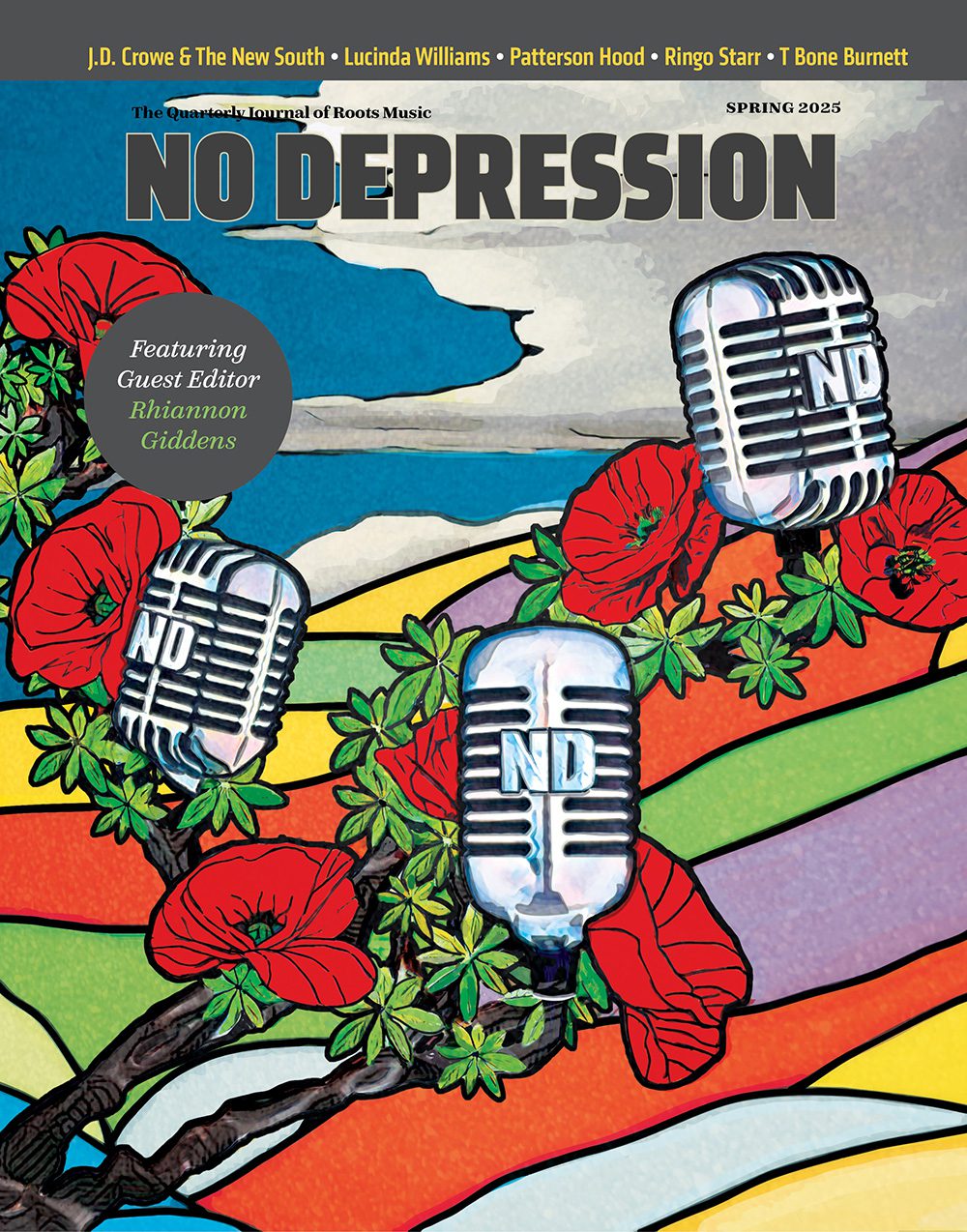Bonnie Guitar – Woman’s Work
Label machinations weren’t the only hazard Guitar was learning to manage with grace and good humor. Asked about solicitations of sexual favors, she replies in shock, “Who told you about that!?” (Actually, it was just a hunch.)
She relates an occasion when an influential figure in her early career surprised her. The man is now deceased and she asks not to use his name. The pair had traveled together to Nashville for the annual DJ convention sponsored by WSM radio. After checking in at the hotel, her companion carried her bags to her room, then announced that the hotel was full so they would have to share. “I flat out said, ‘You get me a room, by myself immediately, or I’m going back home.’ And he did.
“That’s just part of it. I don’t take that seriously either because what does it mean? You just have to say ‘no’ and go down the road.”
Dot released six other Bonnie Guitar singles and three albums through 1961, but “Dark Moon” was to be her only major hit of the era. She has a theory about that, based on a warning she got from “The Purple People Eater” singer Sheb Wooley. “He told me, ‘Don’t let them put that big orchestra behind you,'” she says. “‘Dark Moon’ was a hit because of the simplicity; it had a lonesome, far-out sound. It was almost ethereal, you know? It wasn’t heavy with reverb or anything; it wasn’t the mixing. It was just the way [Robison] recorded it.
“When Randy Wood signed me, he right away put a big band with me. Well that was the kiss of death.” The differences in approach are manifest on the 1991 Bear Family disc Dark Moon, still in print, which compiles most of her earliest recordings on Fabor and Dot.
Other opportunities had more appeal at the time, anyway. Back in Seattle, Bob Reisdorff, a record promoter with Lou Lavinthal’s C&C distributing, approached Guitar with a demo tape that captured her imagination. It was the Fleetwoods singing “Come Softly To Me”. Guitar was so excited by its potential, she joined Reisdorff, Lavinthal and his two C&C partners in starting a record label, first named Dolphin, then Dolton. Guitar’s renown would be an asset to the label, but even more important was her recording experience, unique in the partnership.
Fleetwoods founder Gretchen Christopher was just 18 when the trio first went into the studio on the day after graduation in 1958. She remembers Guitar as a taskmaster, hounding them about pronunciation. “I remember her saying, ‘The girls are saying meeester blue!’,” but she adds, “Bob Reisdorff always credited Bonnie with having the good sense to say the Fleetwoods don’t need a big orchestration. All they need is minimal backing, which was a guitar and bass. And the percussion was our own; it was Gary [Troxel] shaking car keys in his hand.”
Guitar recorded the Fleetwoods at Joe Boles’ studio, a basement setup with limited equipment. “Because they had so much air in their voices, I had to do a lot of different fooling with microphones to get enough sound on the tape to saturate the tape,” she says. “I knew that that sound would be interesting to people because they were so used to the full sound. I wanted it to come out but I wanted it to be intimate. And I knew also not to use a regular guitar sound. I put nylon strings on my guitar…and I played just little, tinkling notes behind them. Then when we did ‘Mr. Blue’ I wanted trombone with that.”
Guitar’s daughter, Paula Johnson, fondly remembers her hours as an 8-year-old curled up quietly around a microphone at Boles’ studio. “[Bonnie] got known for getting tape saturation like nobody was getting,” she says. “I remember her even teaching me to read those needles just falling into the red just a little bit. There were certain places she knew that those needles were gonna cause distortion, and she worked on those singers and getting that sound that is so much like Gary singing right in your ear, right in your face.”
“Come Softly To Me” was a roaring start for Dolton; it spent four weeks at #1 on the pop charts in 1959. The Fleetwoods’ third Dolton single, “Mr. Blue”, also sailed to #1, and the trio released an album by the same name later in the year.
The label also scored a national hit with “Werewolf” by locals Little Bill & the Bluenotes. Guitar contributed the memorable werewolf howl at the end. “She really made us work for it,” Little Bill Englehart says. “She saw that we were young kids, and she wanted more than that out of us. She really grilled us hard and it wasn’t like a real fun session. At the time, I probably thought, ‘Jeez, what a…,’ you know? But as it turned out, when they released the record, it became a national release. It got up on Billboard and all that. She knew what she was doing.”
In a stroke of luck at the end of a long story, the Ventures presented Dolton with a finished master of the instrumental classic “Walk Don’t Run”, which yielded the label a #2 pop hit in 1960 and began the Ventures’ long chart run for Dolton.
Guitar also had been writing and recording her own “Candy Apple Red”, which slipped into the pop top 100 for Dolton in 1959, despite what she felt was a lack of promotion heft on Reisdorff’s part. Their relationship was strained, she thinks, by envy. Although both were credited as producers on all Dolton’s releases, Bill Gavin had made a thing of naming Guitar his “Lucky Lager Dance Time” top producer. “[Reisdorff] didn’t want my name on the records anymore,” she says, “even though I was doing the arranging and the studio work and stuff. He was trying to get me out of the situation.”
In 1960, Guitar effectively abdicated day-to-day involvement with the label when Reisdorff cut a deal with Dolton distributor Liberty Records to move the Fleetwoods and the Ventures to Los Angeles. The partners sold the label outright to Liberty in 1963.
Guitar devoted the early ’60s to touring, spending time with her family, and producing would-be hitmakers independently. “Western Recorders was on Hollywood Boulevard,” she recalls. “That’s where I did a lot of productions. Don Blake was a mixer that I liked real well; we got along great. I’d go there sometimes and Don would stay after recording and we’d work all night on sounds, trying to get different sounds, experimenting.”




